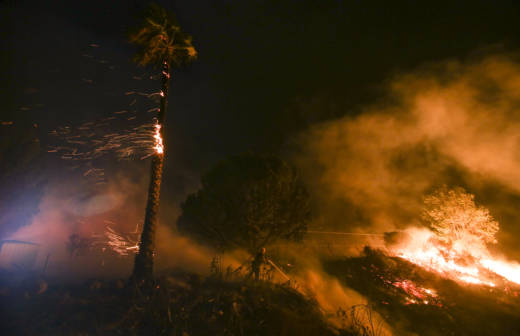Massive smoke plumes from the record-breaking 2017 North American wildfires affected Earth’s atmosphere like a volcanic eruption does, according to a new study published in the journal Geophysical Research Letters.
Powerful flames from the wildfires released thick smoke into the stratosphere, the next highest layer of the Earth’s atmosphere that sits about six miles above the Earth’s surface. “Once there, the smoke particles circled the globe in roughly two weeks and remained in the stratosphere for several months,” writes reporter Brendan Bane for the website, Geospace:
The overall impact of the 2017 North American fires on the stratosphere surpassed all other documented wildfire events since the beginning of stratospheric observations in the 1980s and had an effect equivalent to a volcanic eruption, according to the study’s authors.
‘This event was so big and its fires were so powerful that not only did they inject material into the stratosphere, they injected enough material that the stratosphere was polluted on a hemispheric scale,’ said Sergey Khaykin, an atmospheric scientist at Versailles University (UVSQ) in France, and lead author of the new study in Geophysical Research Letters, a journal of the American Geophysical Union. ‘The effect really was comparable to a moderate volcanic eruption.’

Credit: Sergey Khaykin.
Bane describes why the 2017 North American wildfires were uniquely powerful and how the smoke moved through Earth’s atmosphere in fascinating detail.
The authors of the study hope their findings will lead other researchers to pay more attention to the effects of wildfire pollution on Earth’s atmosphere.
Last year’s wildfire season was one of the most destructive in recent history, destroying millions of acres throughout British Columbia, California, Montana, and Oregon.

